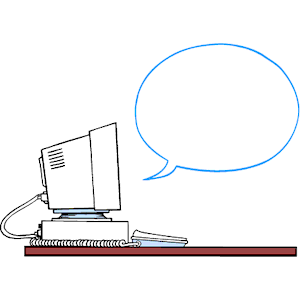Jane Bennett’s lecture points to the power struggle between things and humans that exists in our consumerist culture, but perhaps we shouldn’t be so harsh on ourselves from the get-go by referring to our twenty-first century culture as “consumerist”. Humans have always placed great significance on things, things we own, things we want to own, things that own us. We have always been a consumerist culture. In fact, if you look back to one of the most famous creation stories, the one from the Bible, you see consumerist culture displayed within the first few pages. The first woman, Eve, wanted that piece of fruit. To use Bennett’s words, “it called to her” in all of its unatainability. The fruit and what it symbolized ruled over her because she wanted to own or master the knowledge that it would provide. And in the end, we all know the story I presume, it debunked her from her lordly position, resulting in her slavery for the rest of her days.
The moral of the story? “Don’t let your things own you”.
Got it.
And that is precisely what we have tried to do. We have tried to stay lord over the things of this world by considering them to be objects in our subject versus object conversations. We have denied them autonomy, claimed that they do not have true consciousness, and have even ignored facts in order to do so.
A great example of this would be our posture towards animals. We have a few tendencies here: to view them as our servants (think mules, donkeys, dogs), our products (I am thinking specifically of the food industry that slaughters and genetically modifies animals), or as our best friends (as if animals are human or worthy substitutes thereof). All of these tendencies are ill-founded or elitist in nature, and do a disservice to the whole picture of what these animals truly are. And the truth about what they are is, as yet, not something that we have words to describe. This is part of why we reach for the above conclusions. We quite simply have no way of accessing the felt consciousness of a fly, therefore we refuse to acknowledge its consciousness and kill at will, or else we anthropomorphize it. By doing this, we refuse the fly the respect it deserves as a living, breathing being and ignore the unique contribution of a fly in our shared existence. In short, we refuse partnership and demand servitude.
But why the lengthy conversation about animals and things? How does this relate to rhetoric?
Well, when seeing humans as the only things that are capable of persuasion or thought in the twenty-first century, even with the advent of the digital media and the world wide web, we miss half of the story:
The medium is the message.
Such a miss could be potentially problematic, especially when dealing with a system that “speaks back” by filling in missing information and providing code that can change our own words. Assuming that we are the only rhetors in this digital age leaves out the agency of the new medium. With the absence of such agency also comes the absence of respect, and without respect for our partners in composition, we have a certain flippancy when dealing with them. Before we get into those implications, let us pause to take note of the push and pull of the “New Rhetoric” argument.
If there is a new system of generating information that is as advanced as the World Wide Web–one that comes with a new set of rules concerning navigation, purpose, form, and style that are always changing–some scholars suggest that we need a new toolkit with which to assess the medium. Though not completely adherent to this style of thinking himself, Joshua Reeves admits in his essay, Temptation and Its Discontents: Digital Rhetoric, Flow, and the Possible, that there has been a great change in rhetoric since the advent of the World Wide Web. Everything relies on the present moment, or the Da-Sein, which is the anticipation of the present moment. In this new rhetoric, everything relies on the click (322). Another difference is that as far as purpose is concerned, the context for any given piece on the internet is mainly defined by the links accompanying it instead of being defined only by its content as in print (324).
This sort of intertextuality is one of the reasons that scholars call for a “New Rhetoric”. They need something with which to handle these changes. They lack the language necessary to define this new thing. In fact, in bringing us back to our previous discussion about agency and the place of the digital within the sphere of existence and consciousness, Reeves gives these new qualities in digital rhetoric a name: “Flow”. Stepping aside into my own musings, perhaps, if we left our lordly thrones as subjects in the subjects versus objects debate, “flow” could be considered a new thought channel for our new partner in rhetoric: the digital. The implications of this altered view could mean spark more invention, could cause more care in how we project our voices, and could give rise to more more intentionality when we interact with the digital
If we could have access to the felt consciousness of a fly or of a computer, perhaps our rhetorical lives would be more respectful.


Leave a Reply